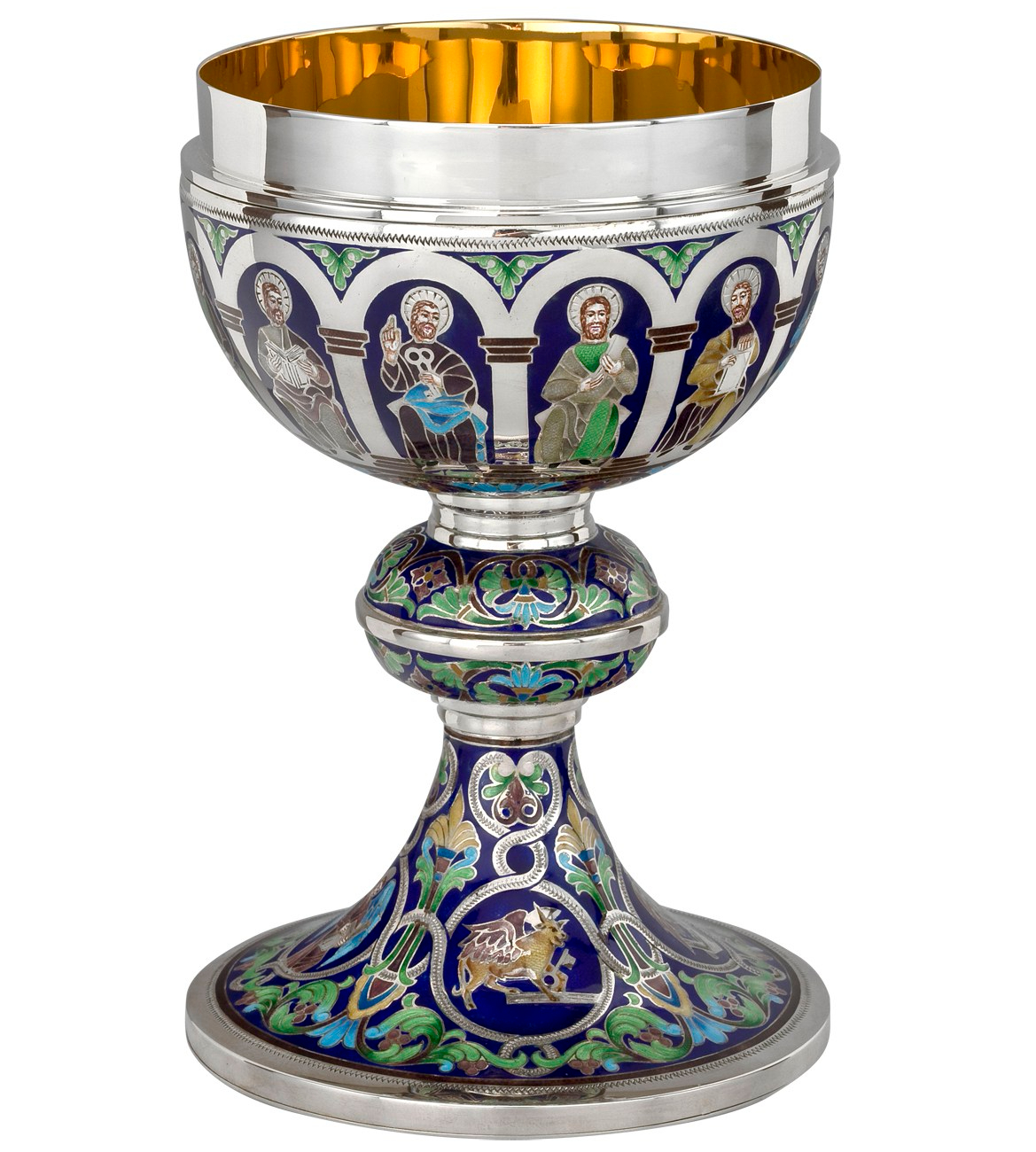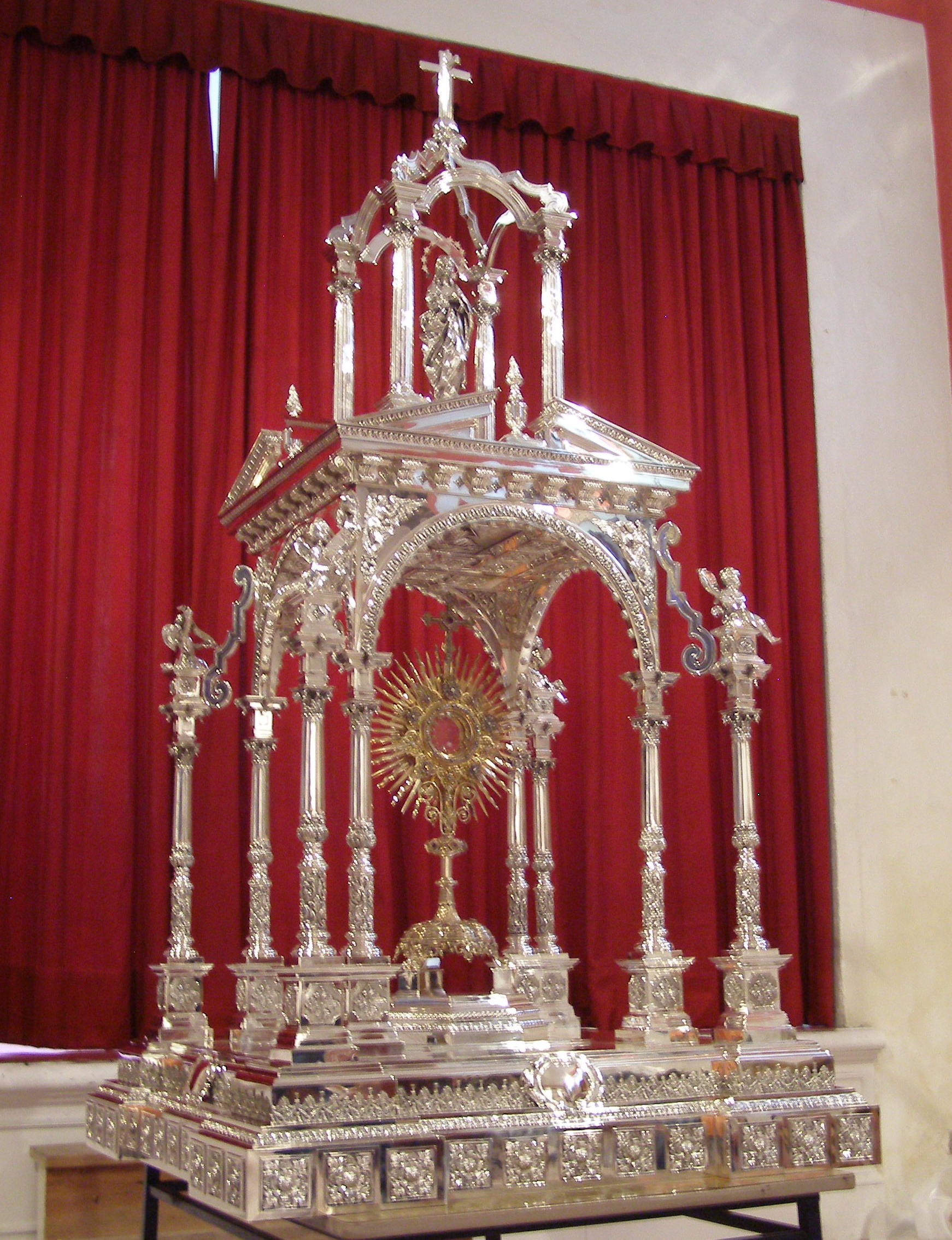Polishing is essential in all metalworking processes carried out in the workshop. Although polishing is considered a finishing technique, any goldsmith's work (monstrances, tabernacles, croziers, chalices, ciboria...) passes two or three times through the hands of the polishers during its production process. "We polishers give shine and life to the pieces; without our work, no matter how well the goldsmith works, they would not look good." José and Pedro, polishers of our workshop, tell us.

José and Pedro work on the polishing of the silver and gold pieces that arrive.
The work of finishing and giving character to each piece of metal.
"The main challenge we face in our work - José tells us - is the question of the pulleys, the parts that, with a rotating movement, allow us to work the metal surfaces". The workshop works, among other tools, with a polishing machine powered by a bovine and connected to two bearings where the pulleys are inserted to make them rotate. "These pulleys have a standard size and that makes our task difficult: each piece is unique and requires specific treatment– adds- that's why, for years, we have been making the tools directly in the workshop, with the help of the lathe operator and adapting the pulleys to the particularities of each order".

Automatic machines are used when many of the same parts are involved, but in religious goldsmithing, the pieces are usually very different. A tabernacle, for example, has about a hundred pieces and each one has to be polished by hand. That is the art of the polisher.
Knowledge of the tools and the skill of the polisher
The finishes that can be given to the surface of a part are many. A bright polish, for example, requires a good casting and a perfect grinding until any scratches are erased from the surface. In this sense, cach pulley, depending on its material, allows gold and silver to be worked in a different way. "Depending on whether they are made of absorbent cotton, absorbent cotton, scouring pad or felt, they can be used for polishing, shining, shading or grinding with tiny particles of iron powder."- Pedro clarifies while showing us another type of pulleys containing diamond powder for polishing enamels, although this work will require introducing them back into the muffle after work.
In the polishing shop the ancient technique of honing is also used. Sometimes, the flat pieces that arrive from silverware have traces produced by the hammer during forging. In this case, a stone of volcanic origin is used to even out the plate of the paten, tray or piece in question.
Polishing requires special skill the more noble the materials being worked. Steel and bronze have nothing to do with gold and silver, which are softer metals that require particularly delicate treatment.Therefore, the pressure exerted by the pulleys and the heat given off by the pulleys when rotating on the metal surface must be carefully measured to avoid deformation.
Works and projects
When asked which of the pieces that have passed through his hands have impressed him the most, José, who has been in the workshop for 22 years, tells us that there have been several:
The tabernacle and monstrance made for Shrine of the Most Blessed Sacrament in AlabamaPolishing each of its pieces took us about 80 hours, including the enamel that framed the emblem of Mother Angelica, promoter of the sanctuary. The monstrance, more than two meters high, was made in gilded silver and was also polished in pieces. It was very nice to work on a piece like this, which we then enriched with a thousand semiprecious stones and a brilliant."

Another nice and risky job was this one. enameled silver chalice. The enamel, as it is made of glass, is very delicate and easily chips. The result, after many hours of work, is fascinating.

Another work of which he speaks with pride is the silver templete for a monstrance of VigoThe new design, made up of more than a thousand pieces, had to have its own custom screws made.

